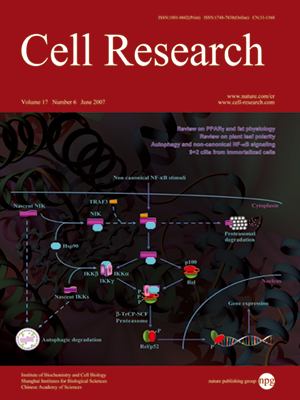
Volume 17, No 6, Jun 2007
ISSN: 1001-0602
EISSN: 1748-7838 2018
impact factor 17.848*
(Clarivate Analytics, 2019)
Volume 17 Issue 6, June 2007: 556-564
ORIGINAL ARTICLES
Interaction between antigen presenting cells and autoreactive T cells derived from BXSB mice with murine lupus
Peng Yang1, Bo Li1, Ping Lv1, Yan Zhang1, Xiao-Ming Gao1
1Department of Immunology, Peking University Health Science Center, Peking University, 38 Xueyuan Rd, Beijing 100083, China
Correspondence: Xiao-Ming Gao(xmgao@bjmu.edu.cn)
Systemic lupus erythematosus (SLE) is a typical autoimmune disease involving multiple systems and organs. Ample evidence suggests that autoreactive T cells play a pivotal role in the development of this autoimmune disorder. This study was undertaken to investigate the mechanisms of interaction between antigen presenting cells (APCs) and an autoreactive T cell (ATL1) clone obtained from lupus-prone BXSB mice. ATL1 cells, either before or after γ-ray irradiation, were able to activate naive B cells, as determined by B cell proliferation assays. Macrophages from BXSB mice were able to stimulate the proliferation of resting ATL1 cells at a responder/stimulator (R/S) ratio of 1/2.5. Dendritic cells (DCs) were much more powerful stimulators for ATL1 cells on a per cell basis. The T cell stimulating ability of macrophages and B cells, but not DCs, was sensitive to γ-ray irradiation. Monoclonal antibodies against mouse MHC-II and CD4 were able to block DC-mediated stimulation of ATL1 proliferation, indicating cognate recognition between ATL1 and APCs. Our data suggest that positive feedback loops involving macrophages, B cells and autoreactive T cells may play a pivotal role in keeping the momentum of autoimmune responses leading to autoimmune diseases.
Cell Research (2007) 17:556-564. doi: 10.1038/sj.cr.7310146; published online 13 February 2007
FULL TEXT | PDF
Browse 1927


